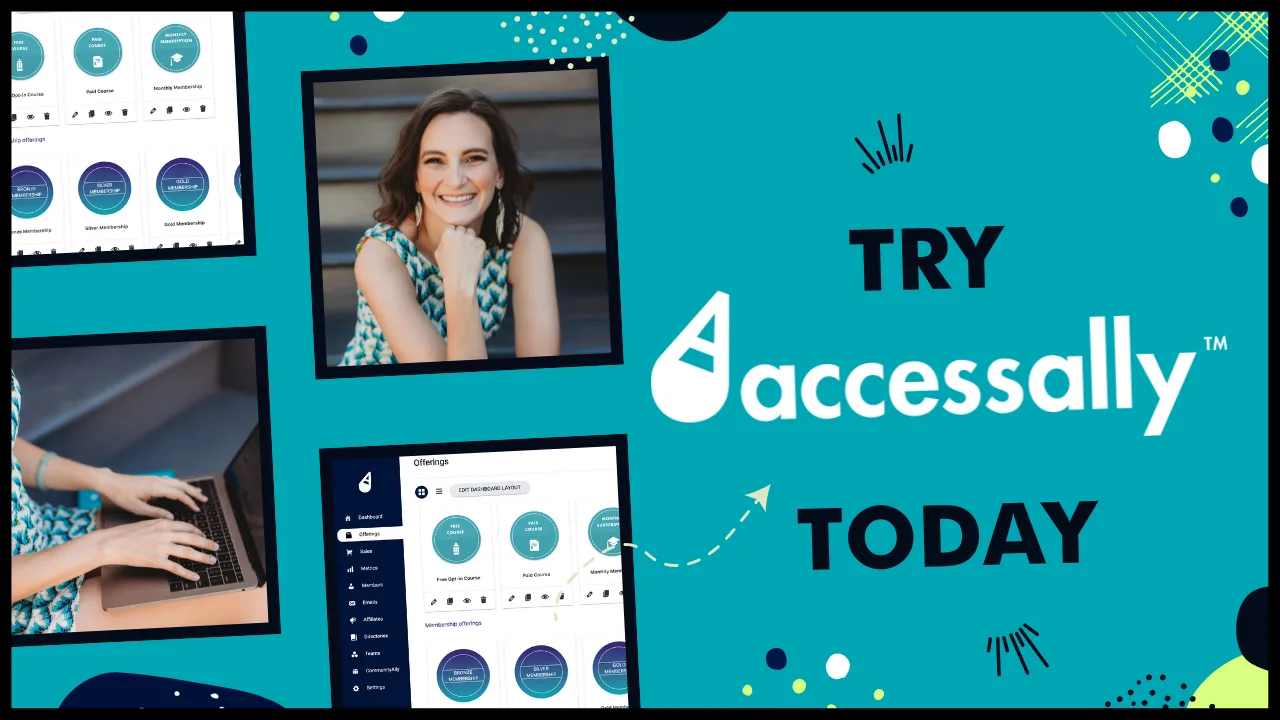Introduction and Overview: Creating Vibrant Member Communities
Building an engaged online community isn’t just about gathering people in a digital space – it’s about creating a thriving ecosystem where members actively participate, share knowledge, and form meaningful connections. When it comes to online courses and membership sites, your community can become the beating heart that keeps students motivated and invested in their learning journey.
A well-structured community does more than facilitate discussion – it transforms passive learners into active participants who support and inspire each other. Think of your community as a living, breathing extension of your course content. While your lessons provide the educational foundation, your community offers the practical application, peer support, and real-world perspectives that cement learning and drive lasting engagement.
The most successful online communities share several key characteristics: clear purpose and guidelines, regular facilitated interactions, opportunities for member-led discussions, and a balance of structured and organic engagement. Whether you’re using a platform like AccessAlly to host your courses or integrating with specialized community tools, the principles of building engagement remain consistent.
Throughout this guide, we’ll explore proven strategies for nurturing an active community, from establishing the right foundation to implementing engagement tactics that keep members coming back. You’ll learn how to create content that sparks meaningful discussions, design activities that foster connection, and develop systems that encourage long-term participation.
Foundation Concepts and Planning
Before diving into the technical aspects of building your member community, it’s essential to establish strong foundational elements that will support sustainable engagement. The key to success lies in understanding that communities aren’t just spaces – they’re living ecosystems that require careful nurturing and strategic planning.
Start by defining your community’s core purpose. Are you creating a space for professional networking, skill development, or perhaps mutual support? Your purpose should align perfectly with your members’ needs and aspirations. For example, if you’re running an online course platform, your community might focus on peer learning and implementation support rather than just general discussion.
Next, develop clear community guidelines that reflect your values and set expectations for interaction. These shouldn’t read like a rigid rulebook – instead, frame them as shared principles that foster meaningful connections. Consider including guidelines about constructive feedback, respect for diverse perspectives, and how members can best support each other’s learning journey.
Community architecture is another crucial foundation element. Think carefully about how you’ll structure your space. Will you have separate areas for different course levels? Should you create topic-specific channels or keep everything in a main feed? The goal is to make navigation intuitive while encouraging natural interaction flows. Many successful communities start with a simple structure and evolve based on member behavior and feedback.


Remember to plan your engagement strategy before launching. This includes creating a content calendar, identifying potential community champions, and designing regular activities that bring members together. Consider implementing welcome rituals for new members, weekly discussion prompts, and monthly virtual meetups to maintain consistent engagement.
Finally, establish metrics for measuring community health early on. While quantitative metrics like daily active users are important, don’t overlook qualitative indicators such as the depth of conversations, peer-to-peer support instances, and member success stories. These measurements will help you adjust your strategy and demonstrate the community’s value to stakeholders.
By taking time to lay these foundational elements, you’re setting your community up for long-term success and creating an environment where meaningful connections can flourish naturally.
Step-by-Step Implementation Guide
Start by defining clear community goals and guidelines. Your community members need to understand the purpose and expectations from day one. Create a welcoming introduction area where new members can introduce themselves and immediately feel part of the group. This could be a dedicated “Welcome” forum or an orientation module in your course platform.
Next, establish your community’s core content pillars. These might include weekly discussion prompts, monthly expert interviews, or regular challenges that align with your course material. Structure these activities to encourage meaningful interactions rather than passive consumption. For example, instead of simply posting a video lesson, add reflection questions that members can discuss in the comments.
The key to success lies in creating a consistent engagement calendar. Plan your community activities at least a month in advance, scheduling regular events like “Member Spotlight Mondays” or “Workshop Wednesdays.” This predictability helps members develop participation habits and gives them something to look forward to.
Implement a recognition system that celebrates active participants and valuable contributors. This could be as simple as monthly appreciation posts or as structured as a points-based rewards program. Remember to personally acknowledge members who help others or share particularly insightful contributions – this reinforcement encourages continued engagement.
Develop a clear onboarding sequence that guides new members through their first week in the community. Include prompts for them to complete their profile, introduce themselves, and participate in their first discussion. Consider assigning “welcome buddies” – experienced members who can help newcomers feel comfortable and connected.
Monitor engagement metrics regularly and adjust your strategy based on what works. Pay attention to which types of posts generate the most interaction, what times of day see peak activity, and which members are emerging as natural community leaders. Use these insights to refine your approach and create more of what resonates with your audience.
Finally, establish a feedback loop with your community. Regular surveys, open discussion threads, and one-on-one conversations with active members can provide valuable insights into what’s working and what needs improvement. Remember that building a thriving community is an iterative process – be prepared to adapt and evolve based on your members’ needs and responses.
Advanced Strategies and Techniques
Taking your community engagement to the next level requires implementing sophisticated strategies that go beyond basic discussion forums and content sharing. One powerful approach is implementing gamification elements that tap into members’ natural competitive spirit while fostering collaboration. Consider creating achievement badges for knowledge sharing, point systems for helpful contributions, and leadership boards that showcase top community contributors.
Micro-communities within your larger community can dramatically boost engagement by creating more intimate spaces for specialized discussions. These smaller groups allow members to connect over specific interests or goals, making interactions more meaningful and relevant. For example, you might create separate spaces for beginners and advanced learners in your microlearning courses, ensuring everyone gets value at their level.
Regular community challenges serve as powerful engagement catalysts. These time-bound activities might involve members working together to solve real-world problems, creating collaborative content, or participating in skill-building exercises. The key is making these challenges accessible enough to encourage broad participation while maintaining enough complexity to keep advanced members interested.
Creating a member mentorship program can transform passive participants into active community leaders. By pairing experienced members with newcomers, you establish natural relationship bridges that benefit both parties. Mentors gain leadership experience and recognition, while mentees receive personalized guidance and faster integration into the community.
Content curation and member spotlights represent another advanced strategy worth implementing. Encourage members to submit their success stories, case studies, or expert insights, then feature the best contributions prominently. This approach not only generates valuable content but also validates members’ expertise and encourages others to share their knowledge.
Remember to leverage data analytics to refine your community strategies. Track metrics like participation rates, content engagement, and member retention to identify what works best for your specific community. Use these insights to adjust your approach, whether that means modifying challenge formats, restructuring micro-communities, or evolving your mentorship program to better serve member needs.
Common Challenges and Solutions
Even the most carefully planned member communities face obstacles along the way. One persistent challenge is maintaining consistent engagement when initial enthusiasm fades. To combat this, create a content calendar that mixes educational resources, discussion prompts, and community events. Schedule these activities during peak activity hours when your members are most likely to participate.
Another common hurdle is dealing with quiet or lurking members who consume content but rarely contribute. The key to success lies in creating safe spaces for participation. Start with low-stakes engagement opportunities like polls or quick check-ins. Then gradually introduce more interactive elements like member spotlights or peer-led discussions. Remember that not everyone needs to be highly vocal to be a valuable community member.
Managing difficult conversations and potential conflicts can also test your community-building skills. Establish clear community guidelines from the start and consistently enforce them. When tensions arise, address them promptly and privately when possible. Consider implementing a peer moderation system where trusted members help maintain community standards.
Time zone differences often present challenges for global communities. Combat this by rotating event times and creating asynchronous participation opportunities. Record live sessions, create discussion threads that span multiple days, and use tools that allow members to engage at their convenience. This ensures everyone has a chance to participate regardless of their location.
Content fatigue is another obstacle many communities face. Keep your material fresh by regularly surveying members about their interests and needs. Mix up your content formats – combine written posts with video updates, audio discussions, and interactive workshops. Encourage member-generated content to diversify perspectives and reduce the pressure on you as the community leader.
Finally, don’t overlook the importance of measuring and adjusting your approach. Track engagement metrics, collect regular feedback, and be willing to pivot when something isn’t working. Your community is a living entity that requires constant nurturing and adaptation to thrive.
Best Practices and Optimization
Creating an engaging member community isn’t a “set it and forget it” endeavor. The most successful communities continuously evolve through careful optimization and adherence to proven best practices. Your community members need consistent attention and strategic nurturing to stay active and invested in the space you’ve created.
Start by establishing clear community guidelines that promote meaningful interactions while maintaining a respectful environment. These shouldn’t read like a rigid rulebook – instead, frame them as community values that everyone can rally behind. For example, encourage members to share their expertise by making it a celebrated community norm, rather than just another rule to follow.
Data-driven decisions are crucial for optimization. Track metrics like daily active users, conversation threads, and response times to identify what drives engagement. If you notice certain types of content consistently generate more interaction, create more of it. The experts at Mighty Networks recommend focusing on “engagement velocity” – the speed and frequency at which members return to participate in discussions.
Consider implementing a structured onboarding process that helps new members find their footing quickly. This might include welcome messages, orientation materials, and connecting them with established community members. The first 48 hours are critical – members who engage meaningfully within this window are significantly more likely to become long-term active participants.
Regular community health checks are essential. Schedule monthly reviews of your engagement metrics, content performance, and member feedback. Pay special attention to patterns in member behavior – when are they most active? What topics generate the most discussion? Use these insights to optimize your content calendar and community activities.
Remember that community building is a marathon, not a sprint. Focus on sustainable practices that you can maintain consistently over time. It’s better to have fewer, high-quality engagement initiatives than to launch multiple programs that you can’t properly support. Stay attuned to your members’ evolving needs and be ready to adapt your approach as your community grows and matures.
Case Studies and Examples
Let’s explore some real-world examples of successful member communities that have mastered the art of engagement. The Digital Photography School community stands out as a prime example, having built an active membership of over 2 million photographers. Their success stems from implementing weekly photo challenges that encourage members to practice new techniques and share their results, creating natural opportunities for peer feedback and discussion.
Another inspiring case is the Fitness Revolution community, which transformed from a basic course platform into a thriving support network. They introduced “accountability pods” – small groups of 5-7 members who check in daily through their course platform. These pods resulted in a 73% increase in course completion rates and a 45% boost in overall platform engagement. The key to success lies in how they combined structured learning with social support.
The Cooking Academy Online demonstrates how gamification can drive engagement. They implemented a points-based system where members earn badges for completing recipes, sharing photos of their creations, and helping others troubleshoot cooking challenges. This approach led to a 60% increase in daily platform visits and a 40% rise in member-to-member interactions.
Looking at the tech sector, CodeCrafters Community showcases the power of user-generated content. They encourage experienced members to create mini-tutorials and code reviews, which are then featured in their weekly newsletter. This strategy not only provides valuable content but also gives members a sense of ownership and expertise. Their retention rates improved by 82% after implementing this approach.
When it comes to professional development communities, the Business Builders Network demonstrates the impact of structured networking. They host monthly virtual roundtables where members discuss specific business challenges. These sessions maintain an 85% attendance rate because they focus on solving real problems rather than general networking. Members report that these focused interactions have led to numerous business collaborations and partnerships.
These examples share common elements: they all provide clear value propositions, create opportunities for meaningful interaction, and maintain consistent engagement through well-planned activities. By studying these success stories, you can adapt their strategies to fit your own community’s unique needs and objectives.
Future Considerations and Conclusion
As we look ahead, member communities will continue evolving alongside technological advancements and changing user expectations. The rise of artificial intelligence and machine learning will likely transform how we moderate discussions, personalize content, and predict member behavior. However, the fundamental principle of building authentic connections will remain at the heart of successful communities.
Your community strategy should embrace flexibility and adaptability. Consider implementing regular feedback loops to stay aligned with member needs, and don’t hesitate to pivot when certain approaches aren’t delivering results. The key to sustained engagement lies in maintaining a balance between innovation and preserving the human elements that make your community unique.
Looking forward, we’ll likely see increased integration between learning platforms and community spaces, creating seamless educational experiences. Virtual and augmented reality may transform how members interact, while micro-communities within larger groups could become more prevalent, allowing for deeper, more focused discussions among members with specific interests.
Remember that building a thriving community is a marathon, not a sprint. Focus on creating sustainable engagement practices that can evolve with your community’s needs. Invest in tools and technologies that support your long-term vision while maintaining the personal touch that makes members feel valued and connected.
As you move forward with your community-building efforts, stay committed to fostering genuine connections, providing value, and creating spaces where members feel empowered to contribute. Success in community management isn’t just about the numbers – it’s about creating lasting impact and meaningful relationships that benefit everyone involved. By remaining adaptable, member-focused, and authentic in your approach, you’ll be well-positioned to build and maintain a community that truly thrives.




